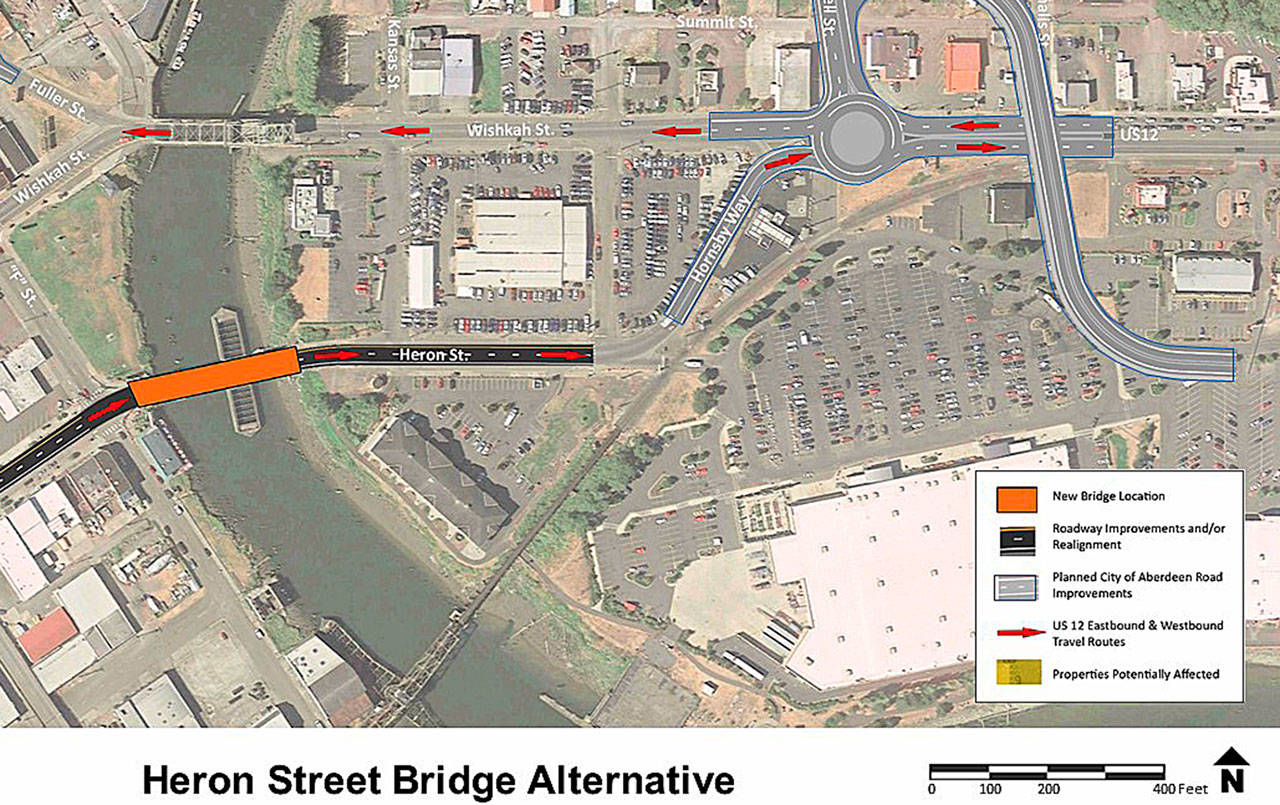Regional transportation planners are getting closer to choosing between one of the alternatives for the replacement of the Heron Street Bridge in Aberdeen.
The results of a survey on four options have been tallied, and the one that has the least impact on local businesses and an estimated cost close to what has been earmarked for the project rose to the top.
“We’ve completed our survey and we’re working with our stakeholders to come up with the actual preferred alternative,” said State Department of Transportation Planning Manager Dennis Engel. “We’re working to come up with one in the next week to two weeks.”
The option garnering 41% of the survey’s first place votes was the “Heron Street Bridge” option. The bridge would be constructed in the same location as the existing bridge, its estimated cost of $66-$70 million is below the $78.6 million the state has set aside for the project, and this option would have the least impact on neighboring businesses, said Engel.
“That was one of the things people were really concerned about (the impacts on businesses),” said Engel. “This one had only two temporary impacts.”
About 1,000 people participated in the survey, said Engel. The option with the second most first-place votes was the “One 2-Way Bridge,” which would have four lanes and replace the two current one-way bridges and sit about midway between where the two existing bridges stand. This option has significant impacts on surrounding businesses and property and a price tag of $117 million.
The two other options, the “F Street Bridge” and “Two 1-Way Bridges” options, each got about 15 percent of first place votes on the survey, said Engel.
The next step is the stakeholder meeting to come up with an official preferred option. There will then be an open house, like the one held at the Log Pavilion March 20 that attracted about 150 people and introduced the public to the four bridge replacement options, to unveil that preferred option.
Engel said that open house is tentatively scheduled for June 12. However, that date is far from set in stone, nor is a construction schedule once the preferred option is announced.
“We’re not saying we are going to start construction this summer, though we remain optimistic,” said Christina Werner, spokeswoman for the Department of Transportation’s Olympic Region. “We will continue working with stakeholders throughout this process, but in terms of a timeline a lot of things can still change.”
While money has been earmarked for the bridge replacement, Werner noted that final decisions for this project and other transportation projects in the region and statewide won’t be made until the governor signs off on the budgets passed by the Legislature late in April.
Werner and Engel were impressed with the amount of community participation in the project so far.
“What I always tell people, if you go out and just do an open house you might see 25, 30 people. In this case we had about 1,000 responses to this survey,” said Engel. “Another really nice thing, the open house we held there had I think about 120 people sign in, but with the people who didn’t sign in we had about 150 people.”
Engel said “We’re on track to get the predesign work by the end of June.” Final design work doesn’t begin until the preferred option is made official and is done primarily by the Department of Transportation’s bridge office, sometimes with some outside help from consultants, but only when necessary.
If the survey’s top choice is indeed chosen as the preferred option, it’s estimated it will take 3½ years to construct. A temporary bridge will be built north of the existing bridge.


